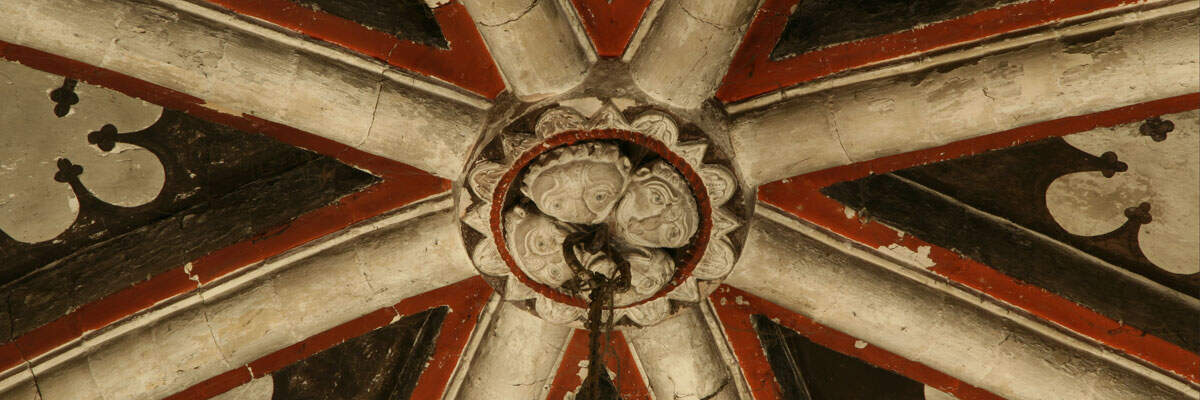Berkeley is situated on the English side of the Severn estuary in the Vale of Berkeley, some 10 miles SW of Stroud. A stretch of the Little Avon River runs to the S of the village to enter the estuary just over a mile to the west. The castle is on the SE edge of the village and consists of an approximately square courtyard with a roughly circular shell keep at its NW corner. The Great Hall occupies most of the E range with the service quarters to the N of it and the State Lodgings to the S. The Inner Gateway is at the S end of the W range, and the Outer Gateway is some way to the W of this. The land falls away to the S and E, so that the castle dominates the view from Berkeley Heath. Most of the castle is 14thc, but the shell keep and the Great Hall are 12thc in origin and retain some original features.
A castle was erected here in 1067 by William Fitz Osbern, Earl of Hereford (d.1071), comprising a motte and bailey with a timber keep on the motte. In the mid-12thc the motte was surrounded by the present shell keep, and was levelled within the shell wall, so that the ground is some 20 ft higher inside than it is outside the shell keep. This work was carried out by Robert Fitz Harding, immediately after he received the castle from Henry of Anjou (later Henry II) in 1153. The keep is approximately circular and originally had round bastions to the NE, NW, SE and SW. Only the NE bastion (with an elaborate 12thc window) and the SE bastion remain; the NW bastion was replaced by Thorpe’s Tower in the 14thc, and the remainder of the W stretch of the shell wall was destroyed by a Civil War battery from an emplacement on the roof of the nearby parish church. It was consolidated but the SW bastion was not rebuilt, and the shell wall was never rebuilt to its original height on this side. The keep is of reddish coursed sandstone rubble construction with pilaster buttresses, but this structure survives only on the S and SW sides, the remainder having been rebuilt. On the E face of the keep, between the two surviving bastions, is a forebuilding in the form of a rectangular tower built against the shell wall. It was not built with the wall, but added slightly later in the 12thc. This contains the staircase leading to the elaborate main E entrance doorway to the shell keep. The forebuilding has been considerably altered in later centuries.
Further 12thc fabric is found in the Great Hall, built against the E curtain wall. The Great Hall was rebuilt in the 14thc and extensively restored and remodelled by the 8th Earl, who succeeded to the Berkeley estates in 1916, when he found the castle in an advanced state of disrepair. As a result of these restorations, fabric which appears to be 12thc may not be original. The rectangular hall has its high end at the south, and at the north is a screens passage with a gallery above, divided from the main space by a wooden screen brought from Caefn Mably (Glamorgan). Along the east wall are three tall, round-headed window embrasures, and these are 12thc in origin but restored. 12thc chevron voussoirs have been reused in the doorway from the Keep Garden into Thorpe’s Tower, and these are also described here. Finally the Treasury contains four carved stones of 12thc date. Their provenance is unknown, and they may not be local or even British, having been amassed by the 8th Earl, a voracious collector.



